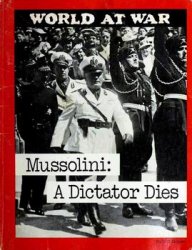As World War II came to
an end, the survivors of that bloody struggle
could afford to face the future with at least a
measure of cautious optimism. With the death of Adolf
Hitler in his bunker in Berlin, there were reasons to hope
that the bitter rivalry that had marked relations among the
Western powers would finally be put to an end and that the
wartime alliance of the United States, Great Britain, and
the Soviet Union could be maintained into the postwar era.
In the meantime, the peoples of Asia and Africa saw the end
of the war as a gratifying sign that the colonial system would
soon end, ushering in a new era of political stability and economic
development on a global scale.
With the perspective of more than half a century, we can
see that these hopes have been only partly realized. In the
decades following the war, the capitalist nations managed to
recover from the extended economic depression that had
contributed to the start of World War II and advanced to a
level of economic prosperity never before seen in world history.
The bloody conflicts that had erupted among European
nations during the first half of the twentieth century came to
an end, and Germany and Japan were fully integrated into
the world community.
On the other hand, the prospects for a stable, peaceful
world and an end to balance-of-power politics were hampered
by the emergence of the grueling and sometimes tense
ideological struggle between the socialist and capitalist
camps, a competition headed by the only remaining great
powers, the Soviet Union and the United States. Although
the two superpowers were able to avoid a nuclear confrontation,
the postwar world was divided into two heavily armed
camps in a balance of terror that on one occasion—the
Cuban Missile Crisis—brought the world briefly to the
brink of nuclear holocaust.
Europe again became divided into hostile camps as the
Cold War rivalry between the United States and the Soviet
Union forced the European nations to ally with one or the
other of the superpowers. The creation of two mutually antagonistic
military alliances—NATO in 1949 and the Warsaw
Pact in 1955—confirmed the new division of Europe,
while a divided Germany, and within it, a divided Berlin, remained
its most visible symbols. Repeated crises over the
status of Berlin only intensified the fears in both camps.
In the midst of this rivalry, the Western European nations,
with the assistance of the United States, made a remarkable
economic recovery and attained unprecedented
levels of prosperity. In Eastern Europe, Soviet domination,
both political and economic, seemed so complete that many
doubted it could ever be undone. Soviet
military intervention, as in Hungary in 1956 and Czechoslovakia
in 1968, reminded the Soviet satellites of their real
condition; communism appeared, at least for the time being,
too powerful to be dislodged. The Helsinki Agreement,
signed in 1975, appeared to be a tacit admission by the West
that the Iron Curtain had taken on a near-permanent status.
In the meantime, behind a shield of Soviet troops and
tanks, the Soviet Union and its Eastern European satellites
acted to stabilize the socialist system and realize the promise
of a better society. Although Nikita Khrushchev appeared to
harbor a sincere belief in the superiority of Marxist-Leninist
ideas over those of the capitalist West, by the 1960s for the
average citizen in the socialist bloc countries, the dream of a
utopian society had begun to fade, and party leaders cynically
manipulated the system for their own benefit.
Only in China was the dream still alive, actively promoted
by Mao Zedong and his radical disciples during
the frenetic years between the Great Leap Forward and
Mao’s death at the end of the Cultural Revolution. Whether
or not his “uninterrupted revolution” was simply a lastditch
effort to retain power, Mao appeared to have a real
awareness that even in China there lurked the danger of
creeping bourgeoisification. His failure is a striking testimonial
to the difficulties of continually stoking the fires of social
revolution.
In the West, economic affluence appeared to give birth to
its own set of problems. The voracious focus on material possessions,
an intrinsic characteristic of the capitalist ethos,
helped promote high levels of productivity in office and factory
but at the same time produced a spiritual malaise in individual
members of society, who increasingly began to question
the meaning and purpose of life beyond the sheer
accumulation of things. As the spread of scientific knowledge
eroded religious belief, increasing social mobility undermined
the traditional base-level structural units of human
society—the family and the community. Modernity, as
postwar society in the West was now commonly described,
appeared to have no answer to the search for meaning in life
beyond an unconfirmed and complacent belief in the Enlightenment
doctrine of progress.
For the have-nots of capitalist society, the sources of discontent
were more immediate, focusing on a lack of equal
access to the cornucopia of goods produced by the capitalist
machine. To their credit, political leaders in many countries
sought ways to extend the benefits of an affluent society to
their disadvantaged constituents, but success was limited,
and experts searched without result for the ultimate cause.
Nowhere was this more the case than in Latin America,
where resource-rich nations like Brazil, Chile, Mexico, and
Venezuela continue to be plagued with political instability,
flagrant corruption, and a widening gap in the distribution
of wealth between the rich and the poor.
The driving force behind many of these changes in the
postwar world was the Industrial Revolution, which continued
to undermine the political, social, and economic foundations
of traditional society, without disclosing the final
destination. Human beings could only hope that as old ways
were inexorably ground up and chucked aside in the new industrial
world, the expanding power of scientific knowledge
would provide them with clues on how to manipulate the
situation to their ultimate benefit.
In the early 1990s, the Soviet Union and its system of
satellites suddenly came tumbling down, leading to the
emergence of truly independent nations in Eastern Europe
and rising hopes for the emergence of a New World Order.
But it soon became clear that the end of the Cold War had
also unleashed long-dormant ethnic and religious forces in
various parts of the world, producing a new round of civil
conflicts and a level of terrorist activity reminiscent of the
early part of the twentieth century. In Part IV of this book,
we will explore the impact of these events on the continents
of Africa and Asia.




 World History
World History









